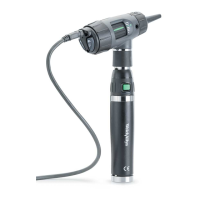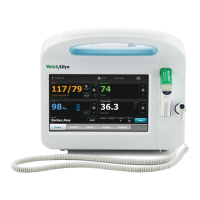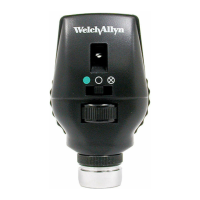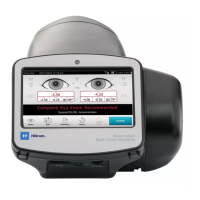Appendix A
Guide to Tympanometry
Aural acoustic immittance measurements have become an integral component
of audiologic and otologic evaluation. One class of aural acoustic immittance
measurement, tympanometry, has become routine in the assessment of ear
disease. Since the original report of Terkildsen and Thomsen (1959), tympano-
metry has been used widely by physicians and audiologists as a research tool
for studying the effects of ear disease on middle ear function and as a clinical
test for detecting medically-significant pathology. Recent technological advances
have paved the way for MicroTymp2, a low-cost, portable, precision instrument
that can be of significant value for determining the need for medical referral,
for diagnosis of ear disease, and for monitoring the course of medical/
surgical intervention.
The Welch Allyn MicroTymp2 is a single-component, aural acoustic admit-
tance meter that records a tympanogram with a 226-Hz probe tone.
Basic Principles of Tympanometry
Acoustic admittance is the ease with which acoustic energy is transferred
from one system to another. If the air in the ear canal is easily set into vibration,
the admittance is high. If the air is difficult to set into vibration, the admittance
of the system is low. The ease or difficulty of setting the air in the ear canal
into vibration is determined by the volume of air and the admittance of the
middle ear. Tympanometry provides a method of evaluating the physical
characteristics of the ear canal/middle ear system by measuring the admit-
tance of the air trapped in the ear canal.
Tympanometry is the measurement of acoustic admittance as a function
of ear canal air pressure. The resulting graph is a tympanogram. Because
ear canal air pressure changes the admittance of the middle ear, the admit-
tance of the air in the ear canal changes when the ear is pressurized. Positive
or negative pressure, introduced into the sealed ear canal, decreases the
admittance of the air in the ear canal by stiffening the eardrum. The effect
of air pressure on the acoustic admittance measured in the ear canal is sys-
tematically altered by ear disease. Tympanometry is a sensitive indicator of
the effects of ear disease on the acoustical and mechanical function of the
middle ear.
Appendix A
A-25

